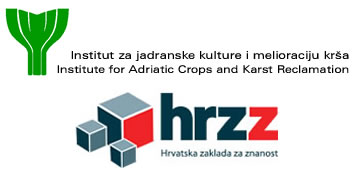Grapevine leafroll disease (GLD) is one of the most important grapevine viral diseases, with the Grapevine leafroll-associated virus-3 (GLRaV-3) being one of its main causal agents. Research on GLRaV-3 has been largely focused on epidemiology and the development of reliable detection assays while the role of different genetic variants of GLRaV-3 in GLD aetiology and consequent plant response is largely unknown. The main objective of this study is to diagnose and better understand changes that highly pathogenic GLRaV-3 induce in susceptible hosts’ plant in vivo. Distribution screening in autochthonous grapevine cultivars of Southern Croatia, nowadays situated in the collection vineyard of the Institute for Adriatic Crops, will be performed with special attention to GLRaV-3 and its genetic variants. Pure variants as well as their combinations molecularly determined by PCR and SSCP methods will be biologically characterised on the set of virus-free indicator plants. Three biological indicators of GLD are the most sensitive woody species that strongly develop symptoms of GLRaV-3 infection and thus are the best hosts to detect morphological, physiological and biochemical changes this virus causes. Host responses will be observed via changes in nutrient status, hormonal statuses, enzyme activity involved in scavenging stressed condition, photosynthetic and transpiration rates, chlorophyll content, membrane permeability and water content. Special attention will be paid on the interaction between virus and host plants by exploring the dynamic of virus replication throughout the infection processes examined by real-time RT-PCR. Obtained results will enable deeper understanding of the pathogenic potential of GLRaV-3 pure strains and their combinations and the consequences on the autochthonous grapevine cultivars from the Adriatic coast, apart from the well-studied visible symptoms.
